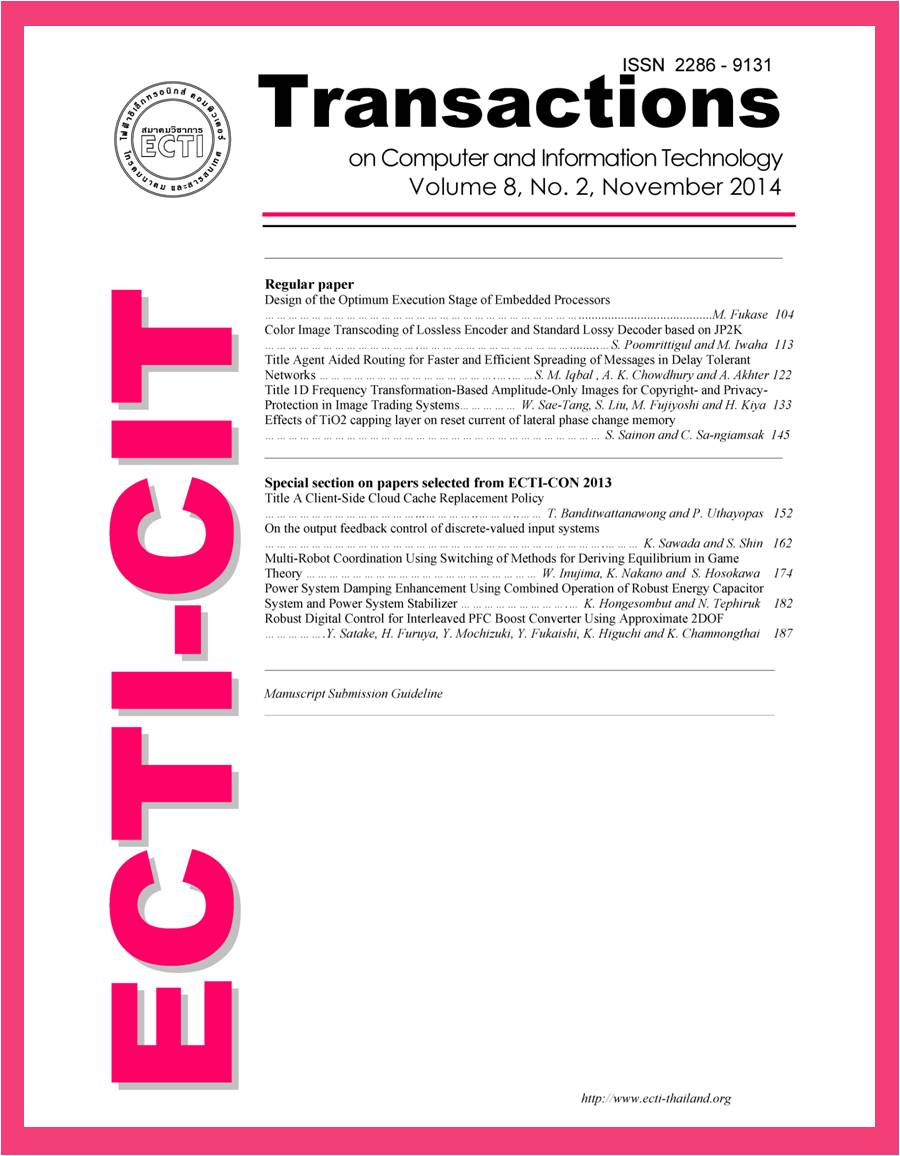Multi-Robot Coordination Using Switching of Methods for Deriving Equilibrium in Game Theory
Main Article Content
Abstract
The study of a Multi-Agent System using multiple autonomous robots has recently attracted much attention. With the problem of target a tracking as a typical case study, multiple autonomous robots decide their own actions to achieve the whole task which is tracking target. Each autonomous robot’s action influences each other. So, an action decision in coordination with other robots and the environment is needed to achieve the whole task effectively.
The game theory is a major mathematical tool for realizing a coordinated action decision. The game theory mathematically deals with a multiagent environment influencing each other as a game situation. The conventional methods model one of the target tracking as a n-person general-sum game, and the use of the non-cooperative Nash equilibrium theory in non-cooperative games and the semi-cooperative Stackelberg equilibrium. The semicooperative Stackelberg equilibrium may obtain better control performance than the non-cooperative Nash equilibrium, but requires the communication among robots.
In this study, we propose switching of methods in the equilibrium derivation both from the non-cooperative Nash equilibrium and the semicooperative Stackelberg equilibrium in a coordination algorithm for the target tracking. In the simulation, our proposed method achieves coordination with less connections than the method using the semicooperative Stackelberg equilibrium at all times. Furthermore, the proposed method shows better control performance than the non-cooperative Nash equilibrium.

